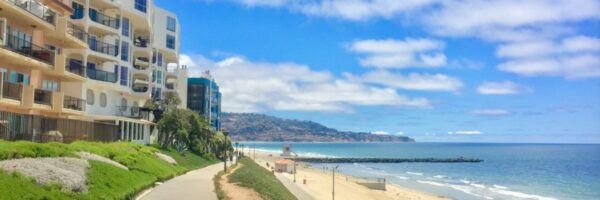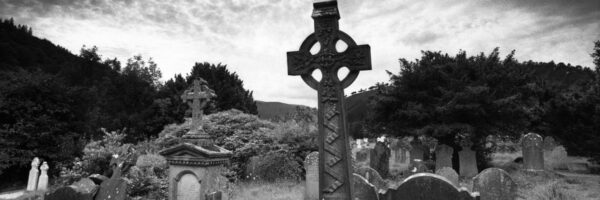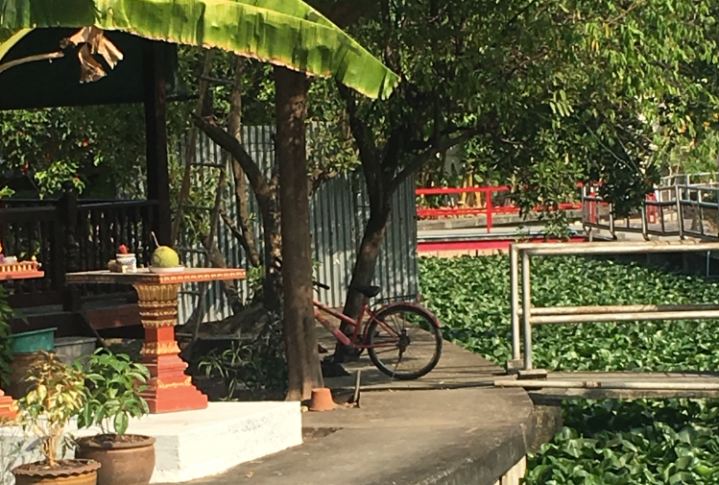
Exploring the khlongs and the back streets of Bangkok
A dog is startled by my presence as I turn the corner and enter the serenity of Wat Khlong Palat Priang in Samut Prakan. I have been cycling in this area for a number of years but recently the frequency and intensity of my casual rides has intensified following the purchase of an excellent fold-up Dahon bicycle from, surprisingly enough, my last overseas posting in Jeddah, Saudi Arabia. The cycling contrasts offered here in this neighbouring province of Bangkok compared to those back in the Middle East could not be more vivid. I love this country so much and, as the old brown dog finally gives up his barking and decides that, as a middle-aged British farang I pose little threat to him, I continue my cycle around the edge of this fine Thai Buddhist temple. As part of the Bangkok Metropolitan Region, Samut Prakan conveniently nestles alongside the capital straddling the mighty Chao Phraya.
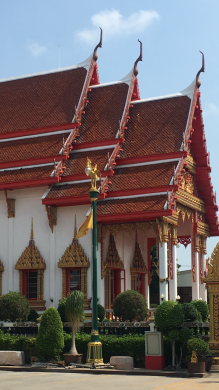
Although more urban towards the east of the river, both sides, including the aptly named ‘green lung’ area are still sporting rice paddies, mangroves and shrimp farms giving a rural glimpse into traditional Thai life. With an altitude barely above sea
It is not unusual to see people fishing from these structures using a wide net held fast by an ingenious winching system ready to pounce on their hapless evening meal as subsistence living is definitely the norm here. After a few kilometres of safe cycling using a combination of side roads and concrete
Reminiscent of something from ancient Egypt, albeit augmented with an electric motor, a particularly resourceful farmer has rigged-up in true Heath Robinson style a collection of wood, metal and rubber random components to successfully lift, what appears to be, a few million litres into an adjacent lake of significance. This ability to create something functional from limited funding always pleases me in my travels around Thailand as people exhibiting extreme parsimony seek solutions to their problems in shrewd ways. Turning off this khlong I am startled to find that I have indeed arrived in London, England, as the false facade on one of the new gated developments of low rise properties announces.
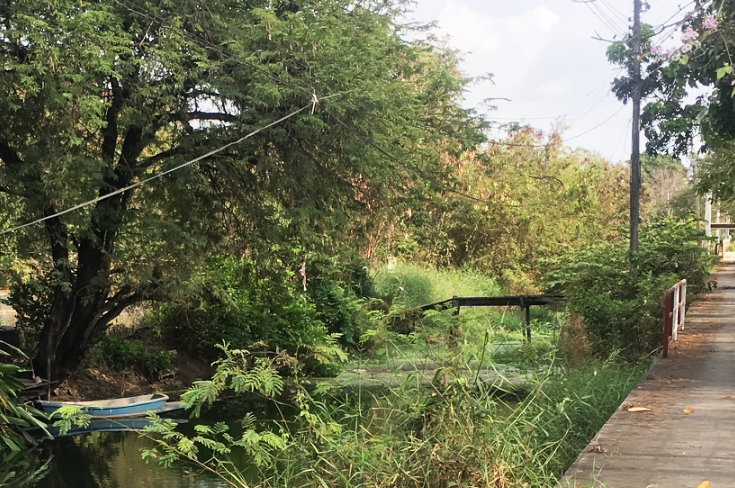
Ignoring the adjacent French inspired mock signs for ‘fleurs’ and coffee I continue along a side road close to Mega BangNa where I eventually locate a wonderful coffee shop with a homemade waterfall in the front garden. Bangkaew Cafe has only been opened for around 6 months, but the young entrepreneur and owner, Karawik Keeratiwud tells me that business is thriving and I can certainly see why as this cafe captures quintessentially the booming Thai coffee culture. With a non-plastic policy extending as far as the stainless steel straw which I use in my soda she has successfully converted the recently arrived middle classes into savvy connoisseurs of coffee consumerism.

Back on the road again and I am momentarily startled by a motorcycle taxi driver as he diligently passes me at some speed whilst cleverly sucking the contents of a bottle of caffeine into his parched throat using his free hand. As a keen motorcyclist myself I enjoy the relative freedoms offered to us Thailand expats here in the Land of Smiles although today I am glad I am on my pushbike as I enter another khlong system along another concrete path.
Although in a slightly more decayed condition I have the path to myself as I get up to a gentle speed. I last used this path on 1st January as I distinctly remember a family enjoying their bank holiday with their mandatory bottles of Singha and Leo. Although quieter now I stop by one of these basic metal sheet houses and admire the owner as she merrily goes about her business tending to her generously stocked adjacent allotment.
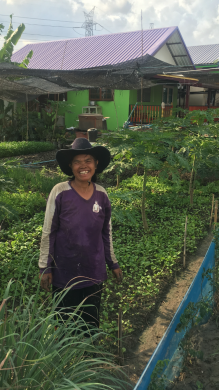
Again I marvel at the ability of Thais to maximise their resources with such ubiquity; this lady might not exactly have all the modern trappings of a western lifestyle but she certainly eats a diet of fresh green vegetables by the looks of things happily growing around her home. The path comes to a sudden rough end and I am forced to lift my bicycle over an extremely rough section.
A new road was recently built across this khlong and it looks like this pathway requires some maintenance but I will keep coming back to monitor this as I am sure the developer will reinstate the path to its original condition; that’s another quintessential beauty of Thailand; the health and safety might lag somewhat behind what we are used to in the west but I know for a fact that this path will be fixed and reopened imminently.
Suddenly the tranquil khlongs water surface is augmented by a pretty looking plant hugging the surface and this soon becomes a solid mass covering the entire canal. This is Pak Tob Chawah (Eichhornia crassipes) and sports a beautiful purple flower.
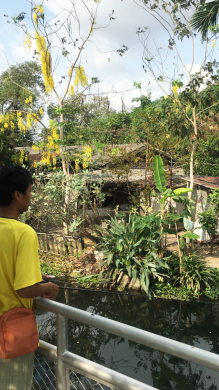
However, appearances often deceive, and it turns out that this non-native weed is indeed a menace to the
One of the original canals was built in the mid 16th century (whilst Ayutthaya was still the capital under the reign of Chairacha) and this khlong created a shortcut which reduced the time for ships to sail from the mouth of the river to Ayutthaya.
Modern districts like Khlong Toei still retain their name created originally from a canal built by King Mongkut in the mid 19th century and in the early 20th century part of the original canal was filled in to expand the size of adjacent Rama IV road. A great day is always on hand here in Thailand. I thoroughly recommend that you spend some time exploring these backwaters of the great nation.
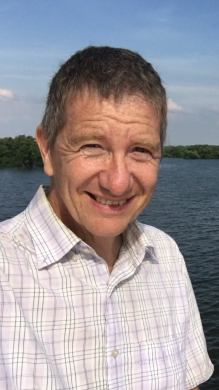
David Jackson is a Londoner from England and he lives in Samut Prakan and works at an international school in Bangkok. He would like to thank the coffee shop owner, Karawik Keeratiwud and science teacher, Jidapa Chaiyasat for additional information provided.


